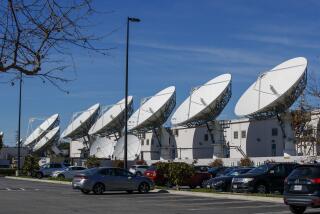Computers, Communications Fusing
Translating even the clearest of long-term visions into practical strategy can be a nightmare. Just ask American Telephone & Telegraph Co., whose recent acquisition of NCR Corp. is the latest episode in a decades-long quest to capitalize on the long-predicted collision of the computing and communications industries.
Just under a decade ago, on Jan. 8, 1982, U.S. District Judge Harold Greene issued a decision granting AT&T; permission to enter the computer business in exchange for the divestiture of the Bell operating companies. The decision came not a moment too soon for AT&T;, for academics and executives alike agreed that computers and communications systems would soon be indistinguishable.
NEC President Koji Kobayashi coined the term “C&C;”--computers and communications--for this inevitable merger; Harvard professor Tony Oettinger more bluntly observed that “the microprocessor was the solvent leaching the glue from the telecommunications industry.” A new super-industry was being born, and AT&T; was convinced that it had to bridge both worlds in order to survive.
Computer giant International Business Machines Corp. happened to agree, but like AT&T;, a longstanding antitrust suit threatening to break the company up was interfering with its plans to get into communications. It was no coincidence that the suit against Big Blue was dropped on the same day Judge Greene’s decision was handed down. Both companies wasted no time turning their visions into business reality.
AT&T; promptly invested in computer maker Olivetti, and IBM bought into Rolm Corp., an up-and-coming Silicon Valley PBX manufacturer. A common assumption underlay both deals--that the collision between communications and computing would happen first at the desktop. Both companies concluded that the other held the missing piece that each needed. Spooked by the success of the IBM PC, AT&T; began selling personal computers manufactured by Olivetti. And IBM concluded that PBXs--office phone switches--would form the communications heart of the “office of the future.” Its computers would talk to one another over the phone lines.
Both companies quickly discovered that their assumptions fell wide of their visionary targets. The AT&T; PC was a woeful dud in the marketplace, and IBM watched helplessly as PCs began using local area networks to communicate, while PBXs became low-cost commodities. AT&T; did not shake itself loose of Olivetti until 1989, the same year that IBM managed to sell Rolm at a loss to the German telecommunications company, Siemens A. G.
Despite these setbacks, both companies remain convinced that the fusion of computing and communications will come to pass. IBM has yet to reenter the telecommunications market, but AT&T; has jumped back into computing with a vengeance, hoping that NCR offers it higher ground than the desktop. NCR is only the fifth-largest computer manufacturer in the United States, but it is a leader in the manufacture of bank automated teller machines and retail point-of-sale terminals.
AT&T; has concluded that the collision between computing and communications will be felt first in the money markets, and combining NCR’s products with AT&T;’s longstanding strengths in network-based transaction processing will give it a global edge.
Meanwhile, the fusion of computing and communications appears to be more likely than ever, though evidence of its reality remains elusive. It is just a matter of time before IBM makes its move back into communications, joining companies the world over searching for the points of opportunity where the collision will finally come.
But even now, the process of turning vision into action is fraught with all the maddening uncertainty of consulting a Delphic oracle. A new super-industry is slowly emerging, but its eventual shape is certain to surprise us all.





